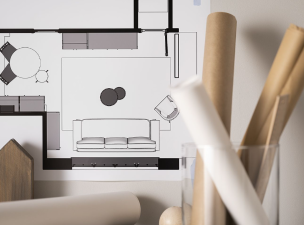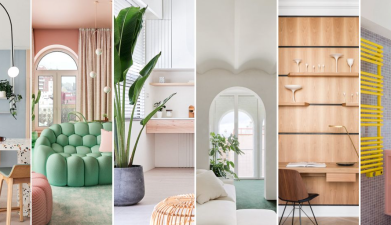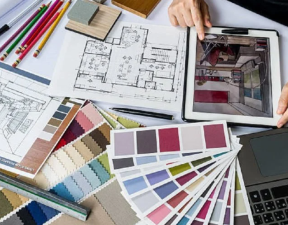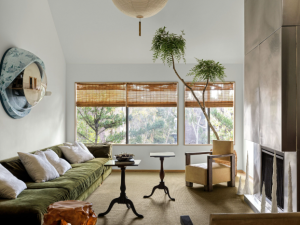What Does Interior Design Actually Include?
Interior design is a component of architectural design, aiming to create a rational, comfortable, and beautiful indoor environment that meets both practical and aesthetic requirements. The main aspects of interior design include the building's floor plan, spatial organization, acoustics, lighting, color matching, and safety features.
This includes the treatment and beautification of the interior surfaces of the structural elements, the use of natural light and lighting, the selection and arrangement of interior furniture, lighting, appliances, audio equipment, and furnishings, the placement of plants and landscaping, and environmental safety measures such as special personnel protection and fire protection.

Main Contents (Core Aspects) of Interior Design:
- Space Planning:
This is the most fundamental and crucial aspect. It includes functional zoning, movement design, spatial scale control, spatial relationships (open/enclosed/permeable), and spatial transformation (wall demolition/construction/addition of floors, etc.). It addresses the question of "how to use" the space.
- Interface Design:
The design of the six surfaces (ceiling, floor, and four walls) that enclose a space. This includes shape, material, color, pattern, and construction techniques. It addresses the issues of "enclosed feeling" and "basic appearance." 3. Lighting Design:
Utilize natural light and artificial lighting design. Artificial lighting requires a multi-layered system, encompassing basic lighting, accent lighting, decorative lighting, and task lighting. Address the issues of brightness, atmosphere, and visual focus.
- Color Design:
Apply color principles to determine the primary, secondary, and accent colors for the space, creating the desired atmosphere (warmth, coolness, movement, stillness, lightness, heaviness, and volume), while also considering the psychological and physiological effects of color. Address the issues of mood and visual harmony.
- Material Design: Select and apply various materials (wood, stone, metal, glass, ceramics, paint, wallpaper, fabric, leather, etc.), considering their texture, grain, color, physical properties (wear resistance, fire resistance, and environmental friendliness), psychological impact, and interplay. Address the issues of tactility, visual impact, and durability.

Furniture and Furnishings Design:
- Furniture: Select or design custom furniture that meets the space's scale, ergonomics, style, and functional requirements (fixed furniture such as cabinets and wardrobes; movable furniture such as sofas, beds, tables, and chairs).
- Furnishings/Soft Furnishings: These include curtains, carpets, lighting, artwork (paintings, sculptures), decorative items, floral arrangements, fabrics (cushions, bedding, tablecloths), and everyday utensils. These furnishings are the "soul" of a space, imbuing it with personality and warmth. They address the issues of "functionality," "personal expression," and "lifestyle."
- Equipment and System Integration: These integrate and coordinate HVAC, plumbing, power (including smart home systems), fire protection, security, audio and video equipment, and other pipelines to ensure functionality without compromising aesthetics. They address the issues of "comfort," "safety," and "convenience."
- Ergonomics and Accessibility: These ensure that spatial dimensions, furniture sizes, and equipment heights meet requirements for comfortable and efficient use. They consider the special needs of the elderly, children, and people with disabilities (e.g., barrier-free accessibility, handrails, rounded corners), addressing the issues of "comfort" and "universality."
- Style and Aesthetics: These elements guide the selection and combination of all the above elements throughout the design, creating a unified and harmonious overall visual effect and cultural connotation. Address the issues of "aesthetics" and "taste."
- Budget and Project Management: Control costs, coordinate with suppliers (materials, furniture, construction), manage construction progress and quality. Address issues of "feasibility" and "implementation."
Elements of Interior Design
- Spatial Elements.
Rationalizing space and creating an aesthetic experience are fundamental design tasks. We must be bold in exploring the new images that modern technology can imbue space with, and not be bound by the spatial images established in the past.
- Color Requirements.
Indoor color not only impacts the visual environment but also directly influences people's emotions and psychology. Scientific use of color is beneficial for work and health. Proper color treatment can both meet functional requirements and achieve aesthetic effects. In addition to adhering to general color laws, interior color also varies with changing aesthetics.
- Light and Shadow Requirements.
Humans appreciate the beauty of nature and often bring direct sunlight indoors to alleviate feelings of darkness and enclosure. Toplighting and soft, diffused light, in particular, create a more welcoming and natural interior. The play of light and shadow adds richness and depth to the interior, creating a diverse experience.
- Decorative Elements.
Integral architectural components within an interior space, such as columns and walls, can be decorated according to their functional needs to create a perfect interior environment. By fully utilizing the textures of different decorative materials, a variety of interior artistic effects and styles can be achieved, while also reflecting the historical and cultural characteristics of the region.
- Furnishing Elements.
Indoor furniture, carpets, curtains, and other items are essential for daily life. Their designs often have decorative characteristics, and most of them serve a decorative purpose. Practicality and decoration should be balanced, achieving a unified yet varied function and form, making the interior comfortable, appropriate, and full of personality.
- Greenery Elements.
In interior design, greenery has become an important means of improving the indoor environment. Planting flowers and trees indoors, using greenery and small decorative items to connect the indoor and outdoor environments, enhance the sense of space, and enhance the beauty of the space all play a positive role.


